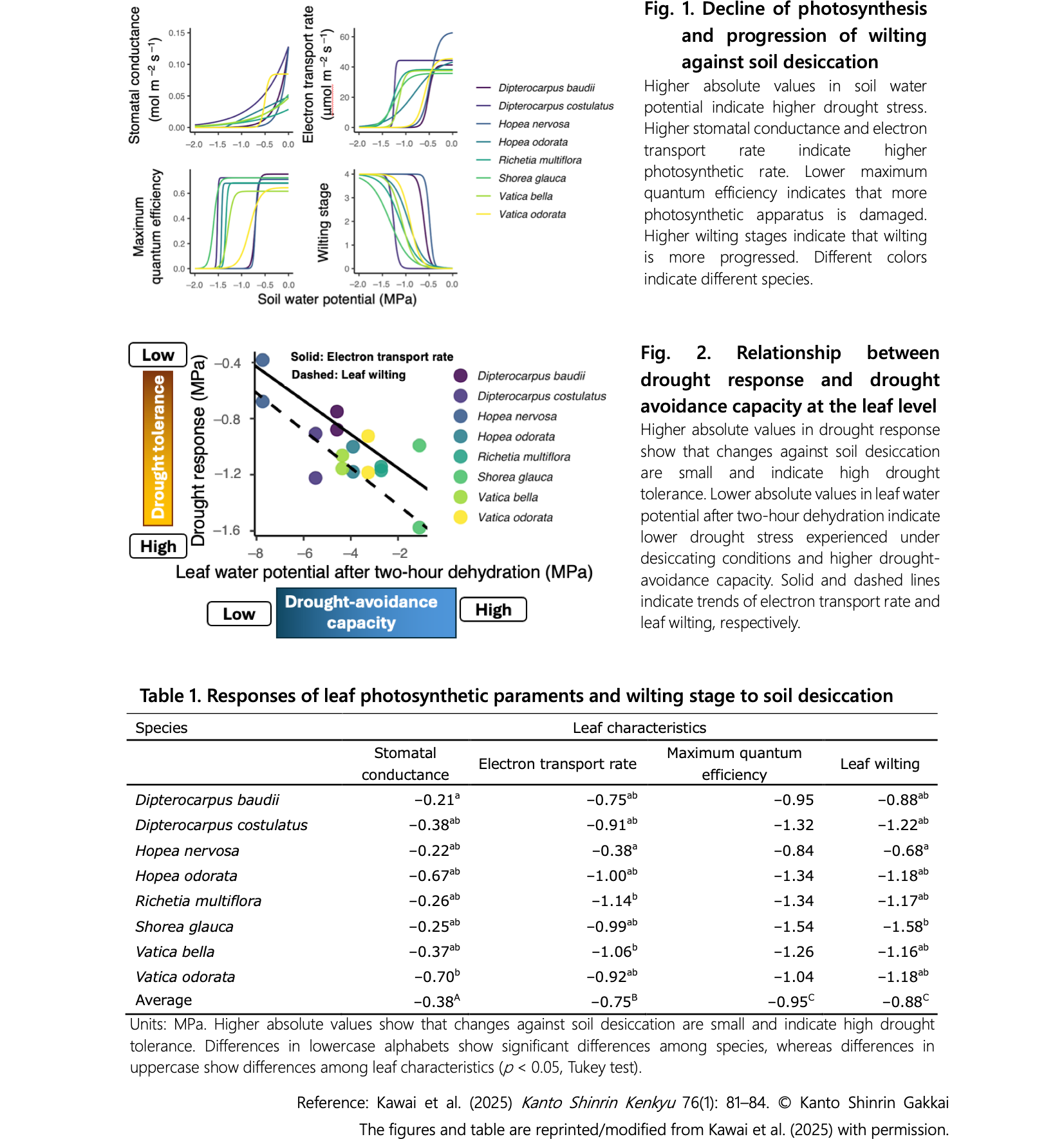Predicting responses to soil desiccation from leaf traits in potted saplings among Dipterocarpaceae species
Description
Ever-wet tropical forests of Southeast Asia account for a large fraction of forestry production in the world, but there are increasing concerns that this productivity will decline due to increased intensity and frequency of droughts associated with climate change. Hence, there is an urgent need to implement climate change adaptation measures by improving the drought tolerance of plantation trees. The Dipterocarpaceae, an important timber resource in this region, consists of >470 species, and there are potentially useful species with high drought tolerance. However, the drought tolerance of individual species and its indicators are unknown, which poses a challenge in implementing climate change adaptation through conversion of planting species.
This study aims to evaluate interspecific differences in drought responses and to identify traits which predict species’ drought response through soil desiccation experiments on potted saplings of eight dipterocarp species, which differ in their distributions and morphological characteristics.
We artificially dried the soil of pots by stopping irrigation in a growth chamber with controlled environments and monitored the changes in physiological and morphological traits related to drought survival (leaf photosynthesis and degree of wilting) to quantify the drought response of each species (Fig. 1). We found that, regardless of species, stomatal conductance decreased at the earliest stage of soil desiccation, followed by a decrease in electron transport rate. The decline in maximum quantum efficiency and leaf wilting occurred at approximately the same time under severely dehydrated soils (Table 1). There were interspecific differences in the response of stomatal conductance, electron transport rate, and wilting progression to soil desiccation (Table 1). These species’ drought responses were significantly associated with leaf-level drought-avoidance capacity, such that species with drought-avoidant leaves can maintain photosynthetic metabolism and avoid wilting under strongly desiccated soils (Fig. 2).
Overall, leaf drought-avoidance capacity is a convenient indicator of drought response in potted saplings of dipterocarps species and can be used to efficiently search for species with high drought tolerance. However, it should be noted that the above results were obtained from young potted saplings under controlled temperature, humidity, and light conditions and need to be validated in plantations and mature trees, where these environmental conditions vary over time and space.
Figure, table
- Research project
- Program name
- Term of research
-
FY2021-2024
- Responsible researcher
-
Kawai Kiyosada ( Forestry Division )
ORCID ID0000-0001-8224-0515KAKEN Researcher No.: 50846334Ng Kevin Kit Siong ( Forest Research Institute Malaysia )
ORCID ID0000-0002-7810-7575Lee Soon Leong ( Forest Research Institute Malaysia )
- ほか
- Publication, etc.
-
Kawai et al. (2025) Kanto Shinrin Kenkyu. 76(1): 81–84.
- Japanese PDF
-
2024_A07_ja.pdf746.14 KB
- English PDF
-
2024_A07_en.pdf389.83 KB
* Affiliation at the time of implementation of the study.

